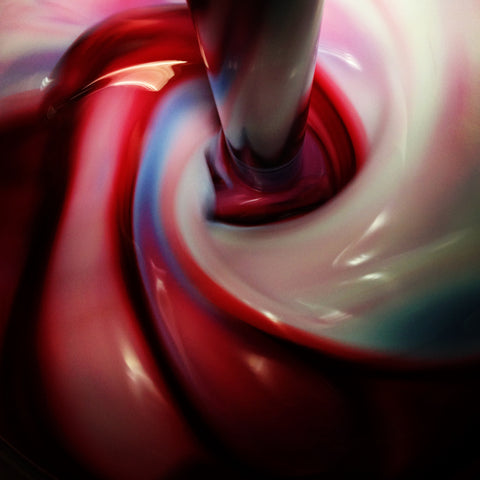News
NEW basic black and white set

Watching Paint Dry
Watching Kroma Crackle do its thing is so fun! Shown here are three examples of Kroma Crackle that have been tinted with acrylic paint, creating a two-toned crackle effect.
To create this brightly coloured crackled effect, simply tint Kroma Crackle medium with small amounts of acrylic colour. For example, the third sample shown here is Kroma Crackle tinted with Quinacridone Red, applied over a dry layer of Cobalt Blue on watercolour paper. Allow 1-3 days to dry, then seal with a clear acrylic medium. For more detailed instructions, visit http://kromacrackle.com/about/How-to-Use-KROMA-crackle
How to mix Pink
I am often asked about Pink. Each red produces brighter, duller, warmer or cooler pinks depending on how they are used.

For example, "hot" pinks are best achieved by using glazing techniques with translucent, bluish reds like Quinacridone Red or Magenta lightened with translucent Zinc White over a white background. Duller, peachy pinks can be achieved by adding Titanium White to warmer, orange-shade reds like Naphthol Light Red. Cadmium Reds produce earthier, desaturated pinks when lightened with white, or diluted in a glaze over a white background. Cadmium Medium Red produces a pink that is orangier, and Cadmium Dark Red produces a pink that is slightly bluer.
Vancouver Grey is back!


Each time we grind a different colour we rinse out the mill and save the pigment residue. Over the year this residue accumulates into a beautiful sludge made up of layers of different colours. When enough has accumulated to make a batch we put it through the mill again and blend it all together to make Vancouver Grey. If you looked at this grey through a microscope you would see all kinds of brightly coloured pigment particles.
Each dated annual batch is a different grey varying from warm to cool depending on the range of colours milled through the year. Vancouver grey can be a very useful colour for subtly desaturating your mixes. Used in a composition, it shows off the surrounding colours, and is a beautiful colour in its own right.








